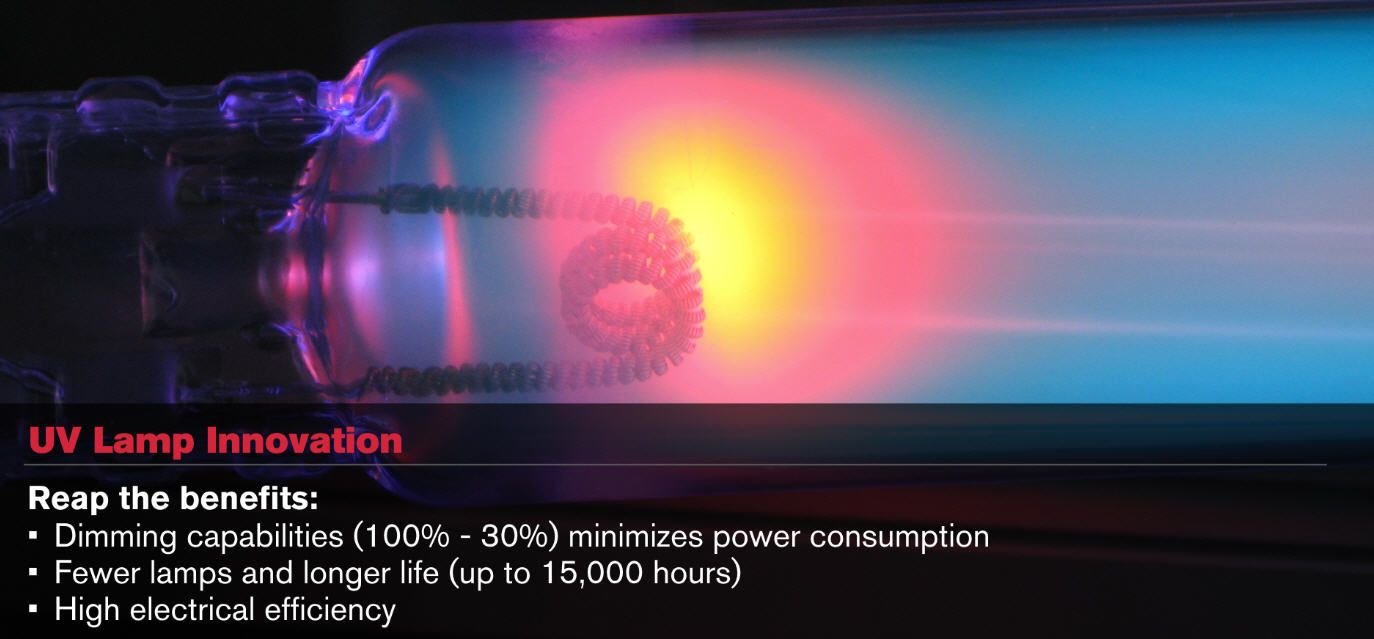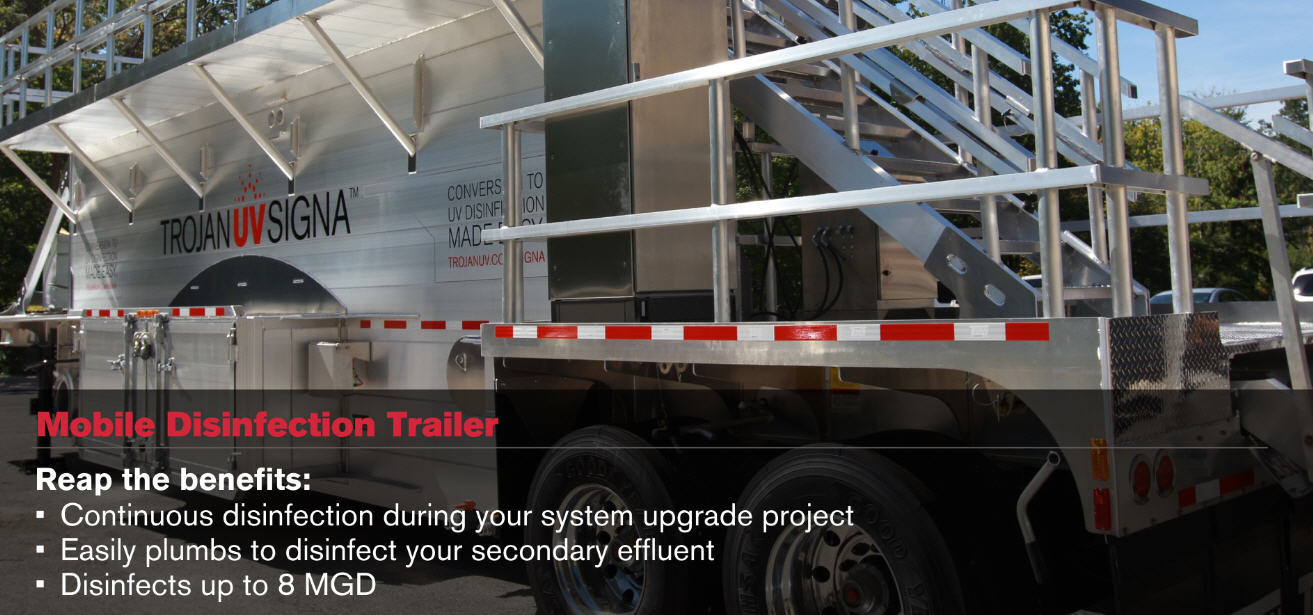In this Q&A, Wayne Lem (TrojanUV market manager) discusses the benefits associated with upgrading an aging UV system, and Frank Cassisi (director of wastewater operations for the Borough of Hollidaysburg, Pennsylvania) talks about his UV upgrade project.
What are some telltale signs that a UV equipment upgrade is necessary?
Lem: The most evident signs are those that are observed through periodic inspection of the UV system. Visible wear and tear and corrosion of vital system components are signs that operators should always be looking for.
Also, if the system is becoming more expensive to operate (e.g., power consumption), or if you notice that maintenance is becoming not so routine anymore, and that more time is being spent servicing the system than in the past, it is likely time to start looking at the upgrade options available to you.
The core components of a UV system consist of UV lamps, ballasts and electronic circuit boards. As we all know, new electronic components generally replace older technology every few years. Take mobile phones, tablets and computers, for example. We often see them become outdated in two or three years. Similarly, though perhaps not as quickly, a UV system’s electronic ballasts and circuit boards (used for a UV intensity sensor) also have limited useful life expectancies. Not only that, but as components age, they may become more difficult to replace and keep in stock.
Significant innovation has occurred in the 15 to 20 years that many UV systems have been in operation. Advancements associated with system efficacy, simplified maintenance and energy efficiency have been introduced, all of which correlate to cost savings.
What are the typical barriers that keep treatment operations from moving forward with UV system equipment upgrades?
Lem: One main barrier to a UV equipment upgrade is often an insufficient capital budget. In these cases, wastewater treatment plants make do with their aging equipment for another year or so and come up with a “Band-Aid” solution until they find the funding for the upgrade. This temporary solution almost always results in higher operational costs in the form of increased maintenance and parts to keep the equipment running.
With newer UV systems today boasting a reduced lamp count and being more energy efficient than their predecessors, the payback could be as little as three years, based on the significant operation and maintenance savings.
In some cases, another potential barrier may simply be a lack of education or awareness of what is involved in a UV upgrade. Some operators or superintendents might not know of other treatment plants that have undertaken a similar UV system replacement/upgrade project — so they are unaware of the available options, the process and the associated benefits.
Why did you decide to upgrade the UV system in Hollidaysburg?
Cassisi: We decided to upgrade due to the fact that our old TrojanUV system was 20 years old and past its useful life.
Once a treatment operation has decided it’s time to upgrade, what does it need to consider before doing so? What special obstacles come into play for a UV equipment upgrade?
Lem: There are obviously many moving parts to these types of projects, and several different stakeholders must work together. Thoughtful planning and collaboration is crucial. At Trojan, we are in continual communication with the various stakeholders and provide step-by-step instructions to contractors to ensure a smooth teardown of the old system and successful installation of the new one.
It’s important to understand the amount of civil and electrical work involved in the project and imperative that a plan be put in place to ensure continuous, effective disinfection while the old system is being removed. Many of our customers take advantage of our mobile disinfection trailer — it can be easily plumbed to disinfect the existing effluent, providing disinfection during the upgrade.
What are the design factors that have to be considered with a UV upgrade?
Lem: It’s important to consider what has changed since the original equipment installation, both in terms of plant process design and permit requirements. It may also indicate any changes that could be expected in the future. This includes items such as:
- Flow rates (average and peak): Are they increasing, decreasing or staying the same?
- Disinfection requirements: Is there a chance that the plant might want to integrate water reuse processes in the future?
- Available footprint: Can the existing channel be utilized or does a new channel need to be designed and constructed? Many new UV systems are designed to fit into existing or smaller spaces, and this can be a significant cost savings.
- Head loss and hydraulic profile: It’s critical to ensure the new UV system fits within the hydraulic profile, as it is likely that lamp count, configuration and channel dimensions will change, ultimately affecting overall head loss.
- Maintenance: What do operators like or dislike about their current system? New UV systems have been designed to overcome the operation and maintenance challenges associated with older systems, such as cleaning and high lamp count.
What advice can you offer other operators and superintendents who are thinking about upgrading their UV systems or converting from chlorine?
Cassisi: A UV upgrade should not be thought of as a monumental task or a major civil works project. UV is a much better way to disinfect than chlorine. You don’t have to handle harsh chemicals. There is no chemical injection system to worry about or maintain, and there’s no need to have a preparedness, prevention and contingency plan in place for chlorine leak incidents.
UV systems are easy to operate and will be more cost-effective in the long term.
What kind of impact has the upgrade had on the wastewater treatment plant in Hollidaysburg, and what kind of benefits are you seeing?
Cassisi: In working intimately with TrojanUV, our upgrade was relatively simple and we quickly realized the benefits of a newer UV system.
The new system has been running exceptionally well. Besides routine lamp change-outs, our staff has spent hardly any time maintaining the system.
I have seen several different brands of UV systems in operation and have found the TrojanUV system to be far superior in all aspects.
Municipalities throughout the world are choosing TrojanUV systems for their disinfection upgrade and chlorine conversion projects. When you're ready to start planning your project, let's talk.








